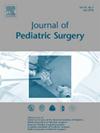Congenital Risk Factors for Chronic Kidney Disease in Patients With Persistent Cloaca: Results From a Nationwide Survey in Japan
IF 2.4
2区 医学
Q1 PEDIATRICS
引用次数: 0
Abstract
Background
We conducted a nationwide survey of persistent cloaca (PC) to investigate the renal function outcomes and factors affecting chronic kidney disease (CKD) in patients with PC.
Method
Information from 466 patients with PC was obtained via a questionnaire in this study. The 290 patients (62.2%) with renal function data were classified into 2 groups based on their estimated glomerular filtration rate: advanced CKD group (<30 mL/min/1.73 m2 [or post-renal replacement therapy]) and non-advanced CKD group (≥30 mL/min/1.73 m2). Univariate and multivariate analyses were performed to identify risk factors for CKD that may affect the renal function, including renal and urinary tract malformations, associated anomalies, and urinary tract treatment. The advanced CKD group was divided into two groups based on age to evaluate age-related differences (younger- and older-age CKD groups).
Results
A regression analysis revealed that congenital renal malformations (odds ratio [OR]: 14.06, 95% confidence interval [CI]:3.07–131.65, p < 0.0001), urinary tract obstruction (OR:4.28, 95%CI:1.12–24.23, p < 0.05), and sacral agenesis (OR:4.54, 95% CI:0.84–30.67, p < 0.05) were significantly associated with advanced CKD. In the univariate analysis of factors affecting the renal prognosis, clean intermittent catheterization (CIC) (OR:4.18, 95%CI:1.21–16.45, p = 0.015), vesicostomy (OR:3.65, 95%CI:1.11–12.98, p = 0.019), and surgery for vesicoureteral reflux (OR:5.43, 95%CI:1.41–22.73, p = 0.006) were significantly associated with advanced CKD. Based on the univariate analysis, hydrometrocolpos was significantly more prevalent in the older-age CKD group compared to the younger-age CKD group (p < 0.05).
Conclusion
CKD development in patients with PC is influenced by a complex interplay of factors, including renal malformations and neurogenic bladder dysfunction due to spinal anomalies.
Level of Evidence
III (Study of Diagnostic Test, Study of nonconsecutive patients, and/or without a universally applied “gold” standard).
顽固性泄殖腔患者患慢性肾病的先天性风险因素:日本全国性调查的结果
本文章由计算机程序翻译,如有差异,请以英文原文为准。
求助全文
约1分钟内获得全文
求助全文
来源期刊
CiteScore
1.10
自引率
12.50%
发文量
569
审稿时长
38 days
期刊介绍:
The journal presents original contributions as well as a complete international abstracts section and other special departments to provide the most current source of information and references in pediatric surgery. The journal is based on the need to improve the surgical care of infants and children, not only through advances in physiology, pathology and surgical techniques, but also by attention to the unique emotional and physical needs of the young patient.

 求助内容:
求助内容: 应助结果提醒方式:
应助结果提醒方式:


